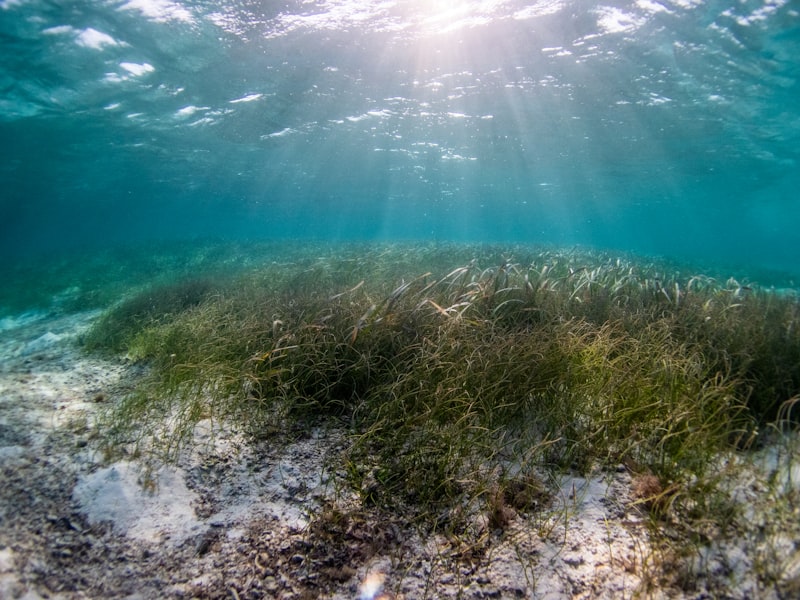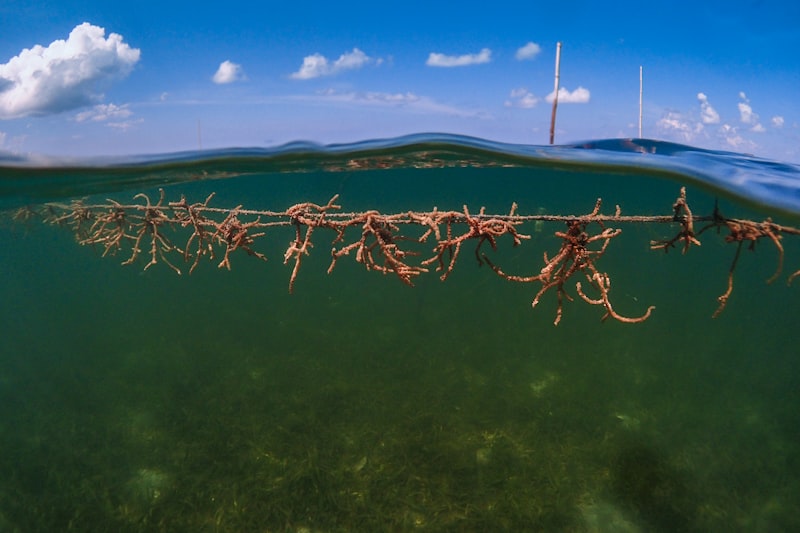Why should we care about marine life conservation? The ocean covers over 70% of our planet, providing us with oxygen, food, and climate regulation. It’s a delicate ecosystem where every species plays a vital role. Yet, human activities such as overfishing, pollution, and climate change pose significant threats to this fragile balance.
One of the key focuses of marine conservation efforts is protecting endangered species. Species like the leatherback turtle, whose populations have dwindled due to habitat loss and accidental capture in fishing gear, rely on conservation initiatives to survive. Through initiatives like protected marine areas and sustainable fishing practices, we can give these creatures a fighting chance.
But conservation isn’t just about protecting individual species; it’s about preserving entire ecosystems. Coral reefs, often called the rainforests of the sea, are biodiversity hotspots that support countless marine species. By reducing pollution and promoting reef-friendly practices, we can help these vital ecosystems recover and thrive.
Education and awareness are also crucial components of marine conservation. When people understand the impact of their actions on marine life, they are more likely to make environmentally responsible choices. Programs that teach sustainable fishing techniques to coastal communities or raise awareness about plastic pollution are invaluable in fostering a culture of marine conservation.
Governments, NGOs, scientists, and individuals all have roles to play in marine conservation. Whether it’s advocating for marine protected areas, participating in beach clean-ups, or supporting research on endangered species, every action counts. Together, we can ensure that future generations inherit a world where marine life continues to inspire wonder and awe.
Turning the Tide: Innovative Marine Life Conservation Strategies Making Waves
Imagine a world where artificial reefs breathe new life into barren seascapes, transforming them into bustling underwater communities. These man-made structures, crafted from recycled materials or purpose-built modules, serve as havens for marine species, offering refuge and breeding grounds where once there was only desolation. Like oases in a desert, these reefs attract diverse marine life, from colorful corals to majestic sea turtles, creating vibrant ecosystems that rival their natural counterparts.
Yet, conservation isn’t just about creating new habitats—it’s also about restoring what has been lost. Coral nurseries are pioneering this effort, cultivating coral fragments in controlled environments before transplanting them back into damaged reefs. This meticulous process mimics nature’s own resilience, allowing coral colonies to regenerate and thrive despite the challenges posed by climate change and human activity.
In the realm of technology, innovation is propelling conservation efforts to new heights. Drones equipped with advanced sensors patrol the seas, monitoring marine populations and detecting illegal fishing activities. Their watchful eyes provide real-time data that empower authorities to enforce regulations and protect endangered species more effectively than ever before.
Education plays a pivotal role in these conservation endeavors. Outreach programs engage communities, raising awareness about the importance of marine biodiversity and fostering a sense of stewardship among future generations. By instilling a deep-seated respect for our oceans, these initiatives ensure that conservation efforts are sustained long into the future.
As we navigate the complexities of marine conservation, these innovative strategies are turning the tide in favor of our oceans. They represent a beacon of hope—a testament to human ingenuity and our collective commitment to preserving the ultimate frontier of our planet.
Guardians of the Sea: The Heroes Behind Marine Life Preservation
Imagine a world where every species, from the smallest plankton to the largest whale, plays a crucial role in maintaining the delicate balance of our oceans. This is the world that marine conservationists tirelessly work to protect. Their mission is not just about saving cute dolphins or majestic sea turtles; it’s about safeguarding entire ecosystems from the threats posed by human activities.
These guardians of the sea are scientists, activists, and volunteers who devote their lives to understanding marine habitats and advocating for their conservation. They brave rough seas, endure harsh conditions, and conduct research to uncover the mysteries of underwater life. Their work extends from studying coral reefs teeming with colorful fish to tracking the migratory patterns of endangered species across vast oceanic expanses.
Through their efforts, these heroes raise awareness about the impact of pollution, overfishing, and climate change on marine biodiversity. They collaborate with governments, communities, and industries to develop sustainable practices that ensure the oceans’ health for future generations.
Just as a lighthouse guides sailors through stormy seas, these guardians illuminate the path towards a future where humans and marine life can coexist harmoniously. Their passion and dedication serve as beacons of hope in the face of environmental challenges.
As we navigate the complexities of our modern world, let us remember the profound words of Jacques Cousteau: “The sea, once it casts its spell, holds one in its net of wonder forever.” The guardians of the sea embody this wonder, working tirelessly to protect and preserve our planet’s most precious resource — the oceans.
Ocean Protectors: How Grassroots Movements are Saving Marine Biodiversity
Across the globe, passionate individuals are joining hands in grassroots movements to safeguard our oceans and preserve marine biodiversity. These dedicated groups, often formed by local communities and environmental enthusiasts, play a crucial role in combating the threats faced by our seas.

Imagine a network of volunteers, like a school of fish working together to protect their habitat. These ocean protectors aren’t just observers; they’re activists, divers, educators, and advocates all rolled into one. Their mission? To tackle issues ranging from plastic pollution and overfishing to habitat destruction and climate change impacts.
Through grassroots efforts, these movements bring attention to local issues that impact marine life. They organize beach clean-ups, engaging the community in hands-on efforts to remove harmful debris from shorelines before it drifts into the ocean. By raising awareness through social media campaigns and educational programs, they empower individuals to make informed choices that reduce their environmental footprint.
Much like coral reefs nurturing diverse marine life, these movements foster connections. They collaborate with scientists, policymakers, and businesses to implement sustainable practices and advocate for marine protected areas. By amplifying their voices through petitions and peaceful protests, they influence change on both local and global scales.
In essence, these grassroots movements are the unsung heroes of our oceans. They embody resilience, adaptability, and a shared commitment to preserving the wonders beneath the waves. By nurturing a sense of stewardship among communities worldwide, they ensure that future generations can continue to marvel at the beauty of marine biodiversity.
From Reef to Deep: The Latest Breakthroughs in Marine Conservation
Imagine diving into the crystal-clear waters of a coral reef, surrounded by a kaleidoscope of colors from fish and corals. These reefs are not just breathtakingly beautiful but also crucial for marine biodiversity. However, they face threats like climate change and pollution. To combat these challenges, researchers have developed innovative techniques to restore and preserve coral reefs. One breakthrough involves using 3D printing technology to create artificial reefs that mimic natural structures, providing habitats for marine life to thrive.
But marine conservation isn’t just about reefs close to the surface. The deep ocean, often referred to as the Earth’s final frontier, holds a wealth of biodiversity and resources. It’s also one of the least explored and most vulnerable ecosystems. Recent advancements in technology have enabled scientists to explore these depths like never before. Remote-operated vehicles (ROVs) equipped with high-definition cameras and sensors allow researchers to study deep-sea ecosystems without disturbing them.
One of the most exciting breakthroughs in deep-sea conservation involves the discovery of new species in previously unexplored areas. These discoveries not only expand our knowledge of marine biodiversity but also highlight the urgent need to protect these fragile ecosystems from emerging threats such as deep-sea mining.
In addition to technological innovations, marine conservation efforts are increasingly focusing on policy and community engagement. Governments and organizations worldwide are collaborating to establish marine protected areas (MPAs) and implement sustainable fishing practices. Community-based initiatives empower local populations to become stewards of their marine resources, ensuring long-term conservation success.
The future of marine conservation lies in continued innovation, collaboration, and a deep respect for the oceans that sustain life on Earth. As we celebrate these breakthroughs, let’s also reflect on our role in preserving the wonders of the sea for generations to come.
Rising Tides, Rising Efforts: Global Initiatives to Safeguard Marine Life
One of the foremost challenges is plastic pollution. Every year, millions of tons of plastic find their way into the oceans, endangering marine creatures that ingest or become entangled in debris. This crisis has spurred international efforts to reduce plastic usage and improve waste management practices worldwide. Initiatives like beach clean-ups and bans on single-use plastics are gaining momentum, encouraging individuals and businesses alike to rethink their consumption habits.
Climate change poses another formidable threat. Rising sea temperatures and ocean acidification threaten coral reefs, which support a quarter of all marine species. Efforts to mitigate these impacts include marine protected areas and sustainable fishing practices. These initiatives aim not only to preserve biodiversity but also to enhance the resilience of marine ecosystems against future environmental changes.
Overfishing is yet another critical issue. Unsustainable fishing practices deplete fish stocks and disrupt marine food webs. Global fisheries management initiatives promote responsible fishing practices and aim to combat illegal, unreported, and unregulated fishing. By setting catch limits, protecting spawning grounds, and promoting ecosystem-based management, these efforts strive to ensure the long-term health of fish populations and the livelihoods of coastal communities.
The challenges facing marine life are complex and interconnected, requiring coordinated global action. Through collaborative initiatives, awareness campaigns, and policy reforms, stakeholders worldwide are working towards a common goal: safeguarding our oceans and the creatures that call them home. As we navigate towards a more sustainable future, the phrase “Rising Tides, Rising Efforts” serves as a poignant reminder of our collective responsibility to protect and preserve marine life for generations to come.
Preserving the Blue Heart of Our Planet: Success Stories in Marine Conservation
The vast expanses of our oceans, often referred to as the “blue heart” of our planet, are not only breathtakingly beautiful but also crucial for life on Earth. As human activities increasingly impact marine ecosystems, conservation efforts have become more vital than ever. Fortunately, there are inspiring success stories that highlight how dedicated initiatives and innovative approaches are making a difference.
Take the example of the Chagos Archipelago, a remote and pristine marine environment in the Indian Ocean. This area has been protected as a marine reserve, prohibiting commercial fishing and other harmful activities. As a result, marine life in Chagos has thrived, with coral reefs recovering and fish populations rebounding. This success demonstrates the effectiveness of establishing large-scale marine protected areas (MPAs) in preserving biodiversity.
Closer to home, the recovery of humpback whale populations in various parts of the world showcases the power of international cooperation. Through agreements such as the International Whaling Commission’s moratorium on commercial whaling and efforts to reduce ship strikes and fishing gear entanglements, these majestic creatures have made a remarkable comeback. Their rebound is not just a conservation success but also a testament to the impact of global collaboration on marine conservation goals.
Innovative technologies are also playing a crucial role in protecting our oceans. For instance, the use of artificial intelligence and satellite tracking to monitor illegal fishing activities has helped authorities intervene more effectively. By combining real-time data with on-the-ground enforcement, these technologies enable proactive conservation efforts and enhance the sustainability of marine resources.

Moreover, community-based conservation initiatives are empowering local communities to become stewards of their marine environments. Projects that involve education, sustainable livelihoods, and traditional knowledge are fostering a sense of ownership and responsibility among coastal populations worldwide. This grassroots approach not only conserves marine biodiversity but also supports the well-being of communities that depend on healthy oceans for their survival.
While the challenges facing our oceans are significant, the success stories in marine conservation provide hope and inspiration. Through effective protection measures, international cooperation, technological innovation, and community engagement, we can continue to preserve the “blue heart” of our planet for generations to come.
Frequently Asked Questions
What are Marine Protected Areas (MPAs) and why are they important for marine life conservation
Marine Protected Areas (MPAs) are designated ocean zones where human activities are regulated to conserve marine ecosystems and species. They are crucial for marine life conservation by safeguarding habitats, promoting biodiversity, and enabling sustainable fisheries management.
How can individuals contribute to marine life conservation in their daily lives
Discover practical ways individuals can make a difference in marine life conservation through daily actions.
How do sustainable fishing practices contribute to marine conservation efforts
Learn how sustainable fishing practices play a crucial role in marine conservation efforts by ensuring fish populations thrive while minimizing environmental impact. Discover the benefits of sustainable fishing for preserving marine biodiversity and supporting ecosystem health.
What are the major threats to marine biodiversity and how are conservation efforts addressing them
Learn about the primary threats to marine biodiversity and discover how conservation efforts are actively combating them. Explore the impacts of pollution, overfishing, habitat destruction, and climate change on marine ecosystems, and find out how initiatives like marine protected areas, sustainable fishing practices, and community engagement are crucial in preserving our oceans.
What role do international agreements play in marine conservation and protecting endangered species
Learn about the crucial role international agreements play in marine conservation and protecting endangered species. Understand how these agreements establish guidelines and cooperation among nations to safeguard marine habitats and biodiversity globally.


